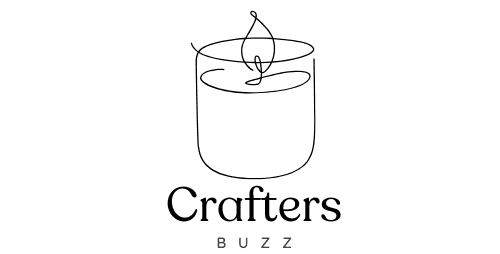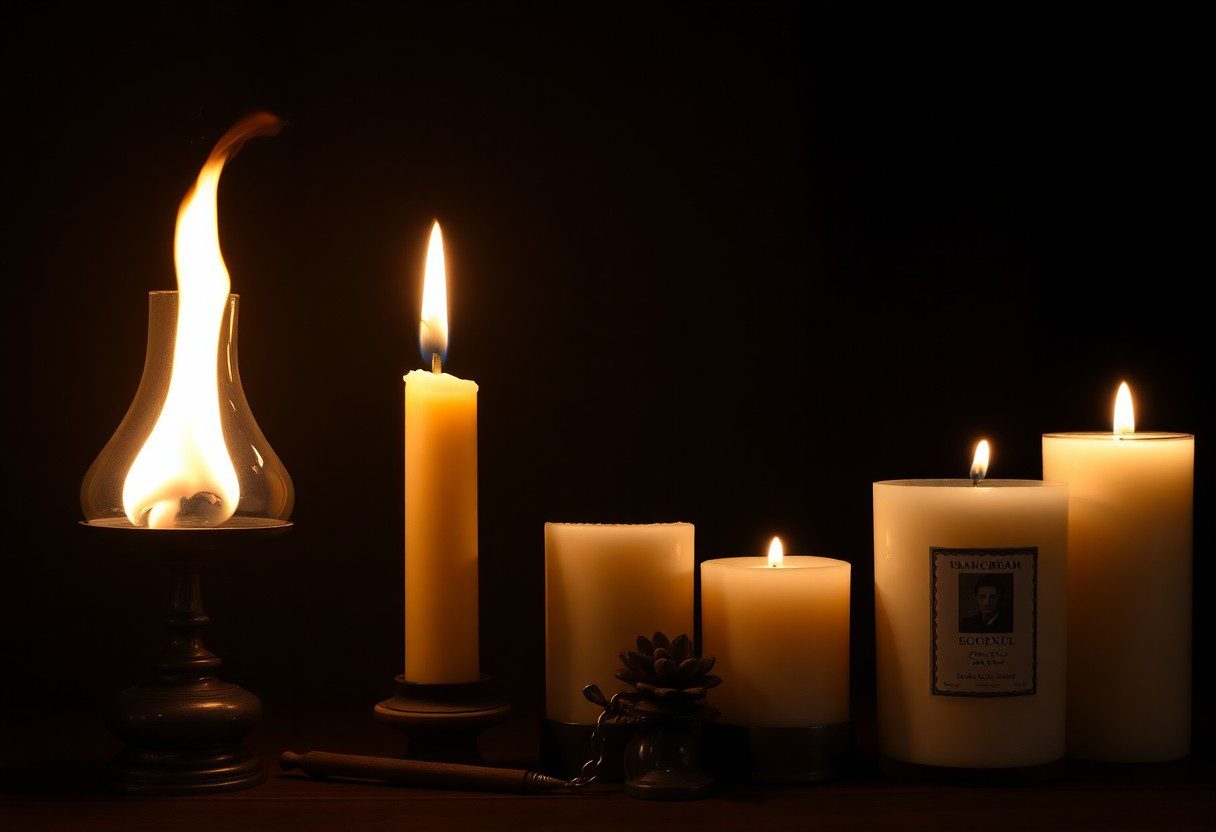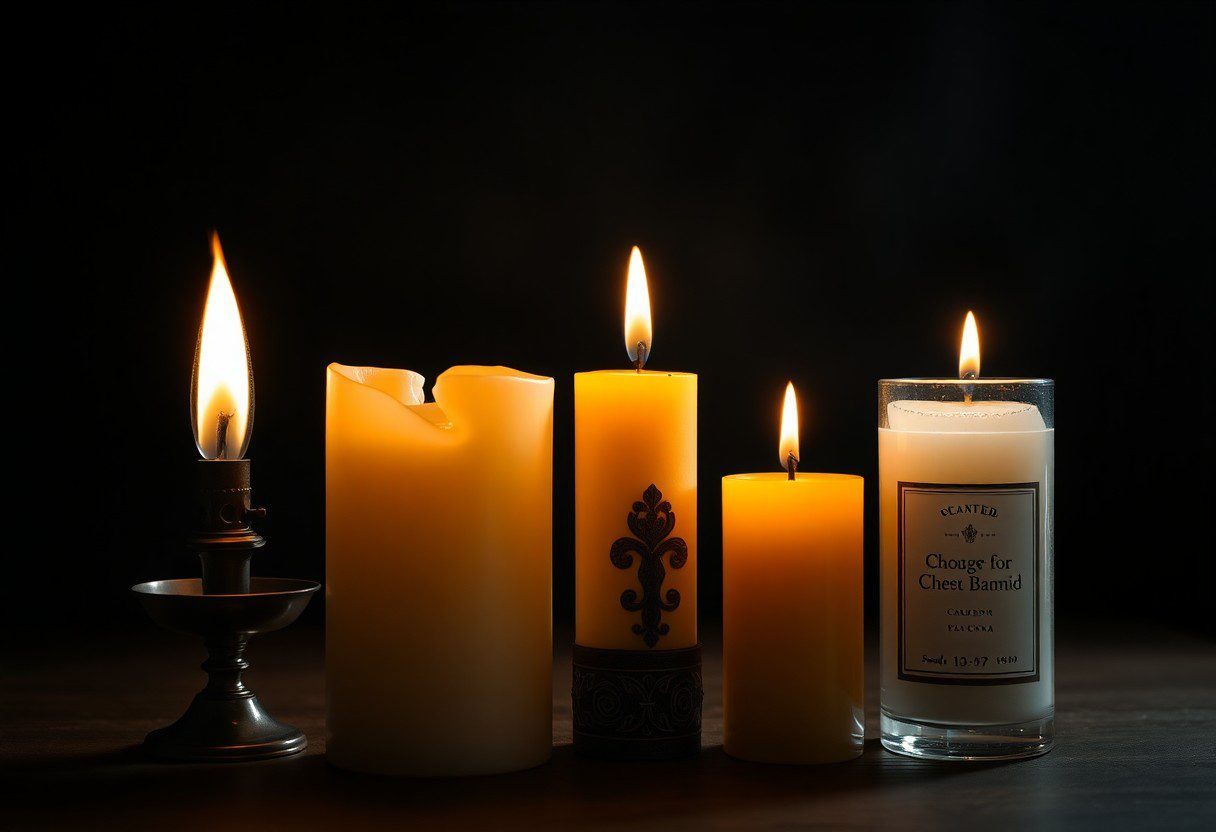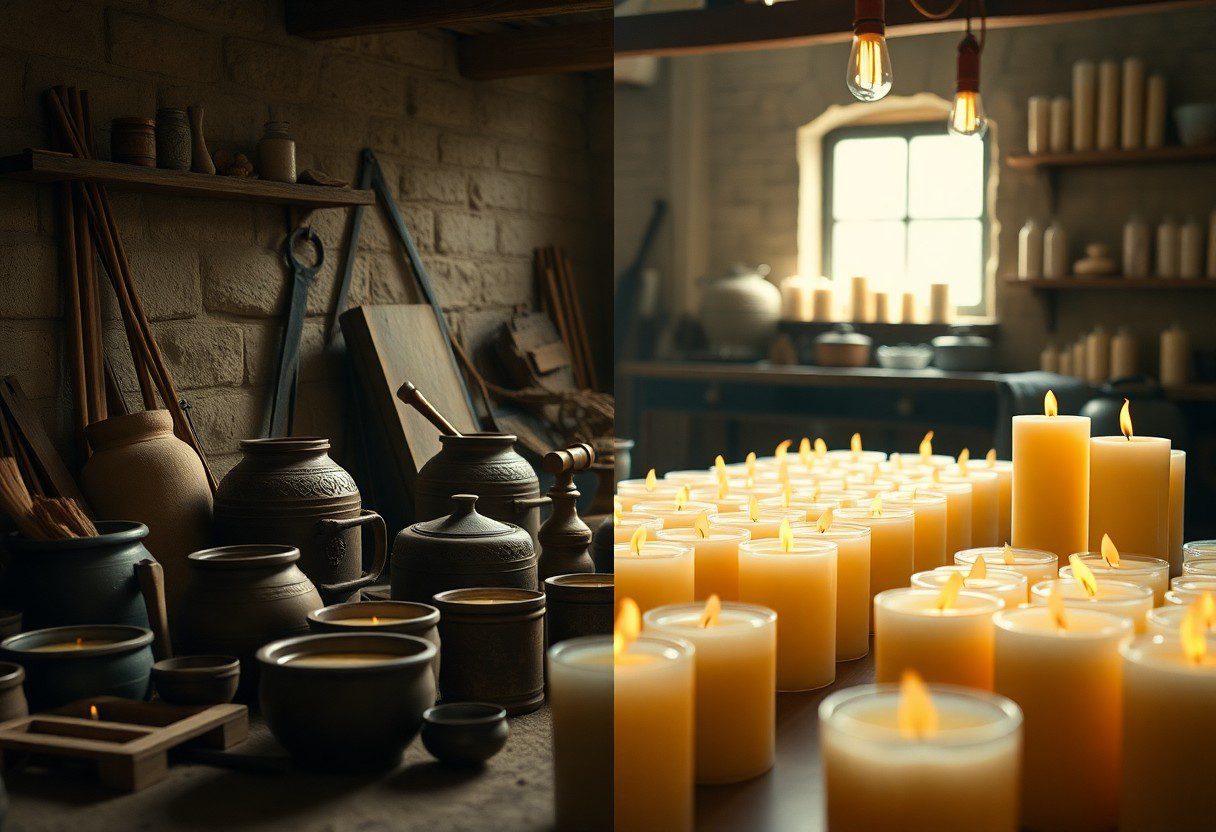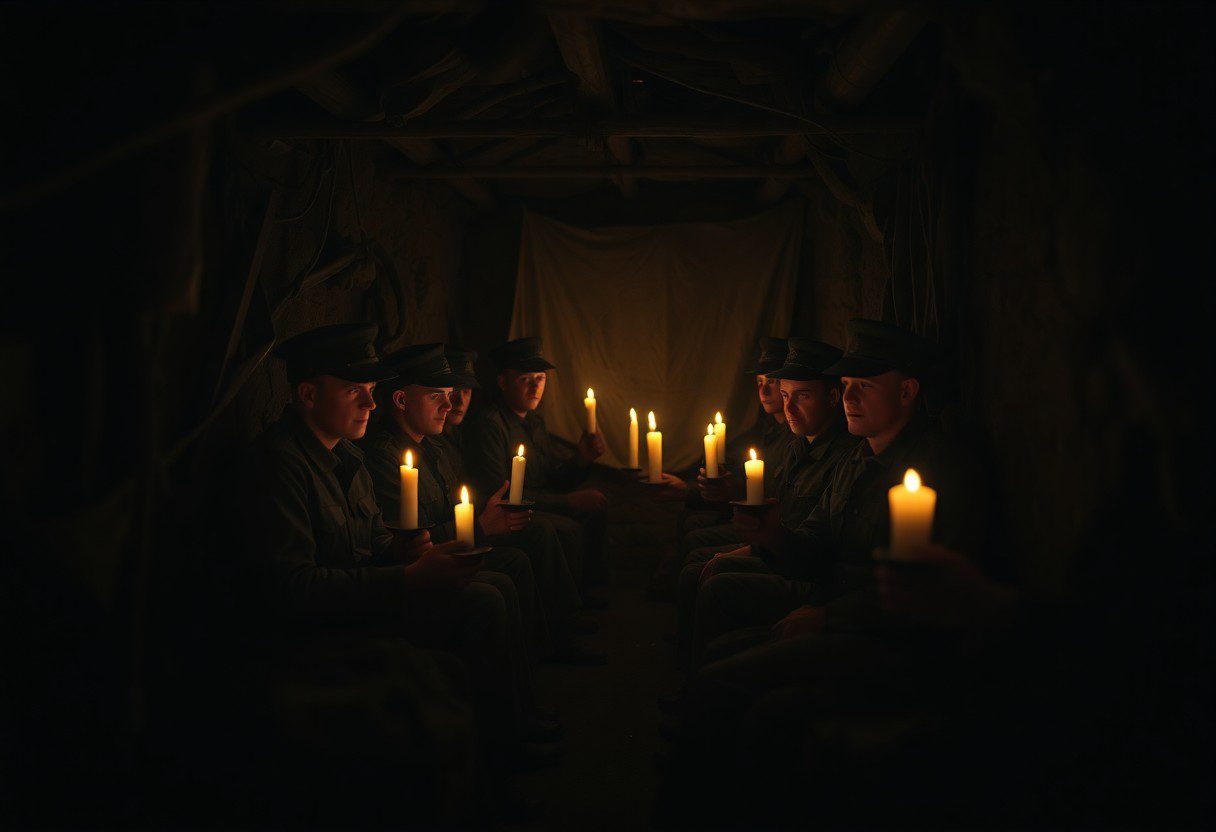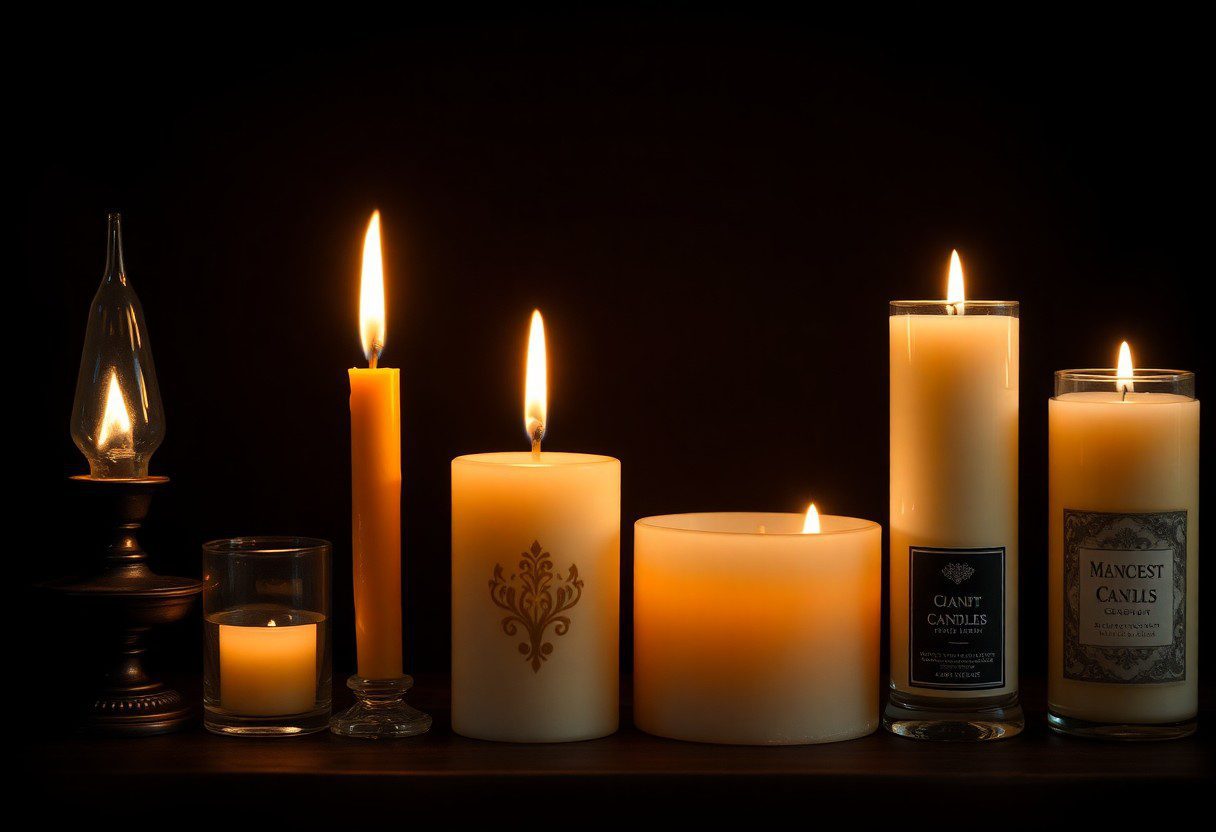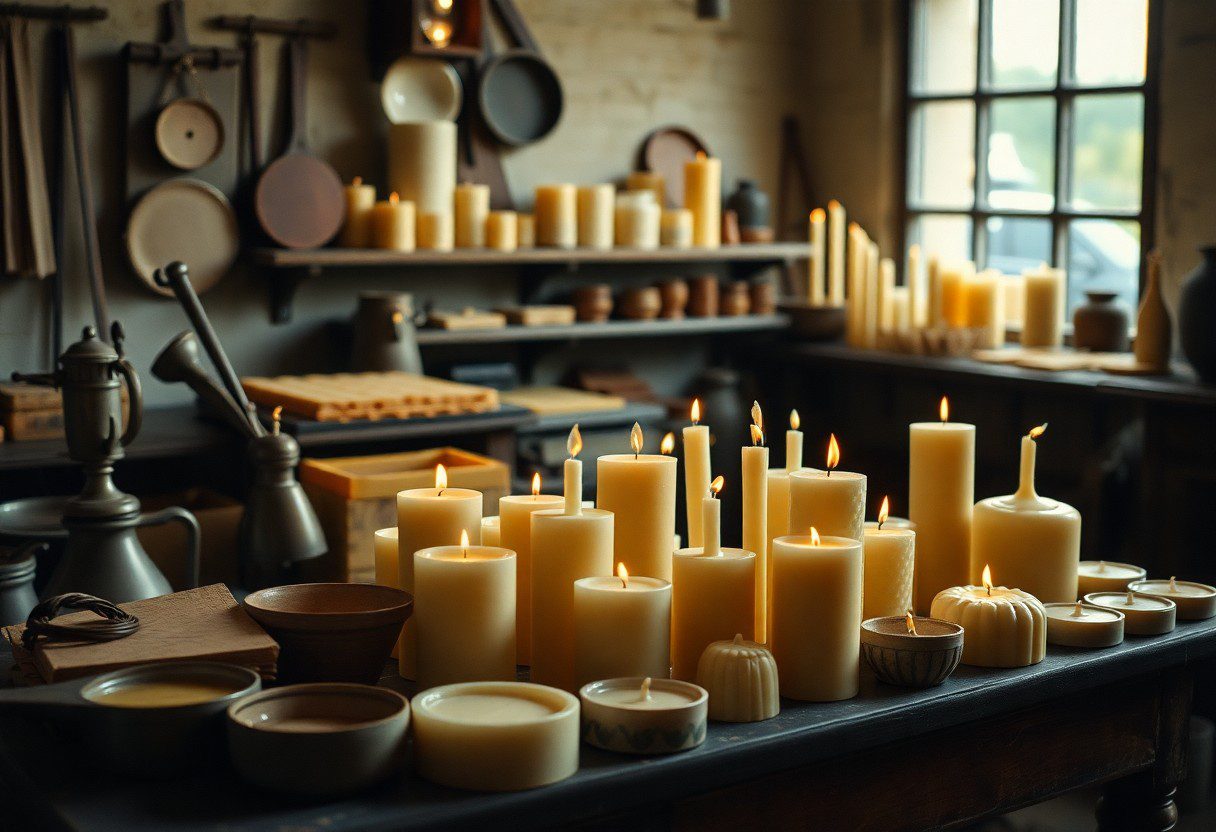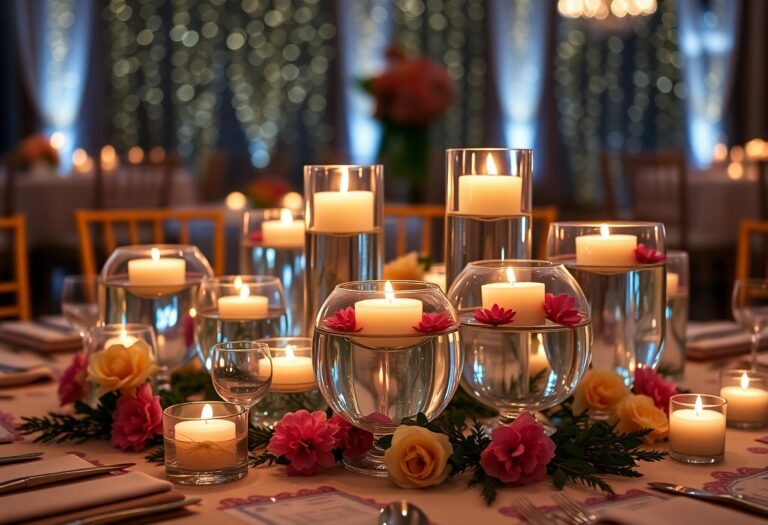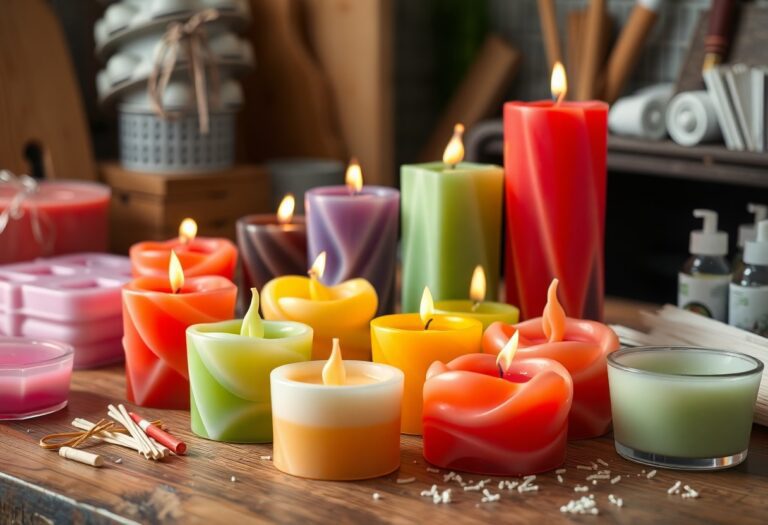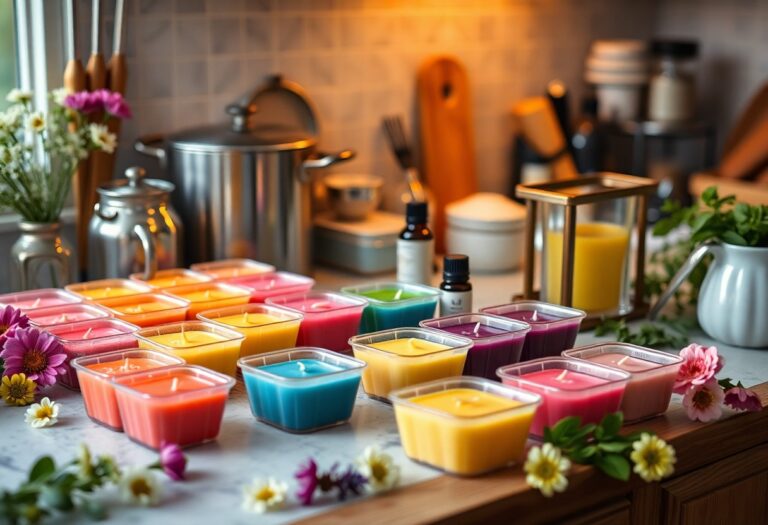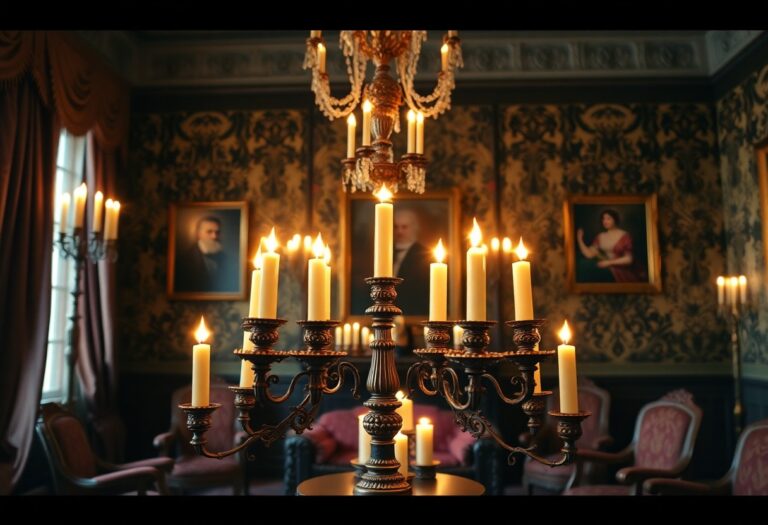Illuminating History – The Evolution Of Candles From Ancient Times To Modern Day
History reveals that candles have played a pivotal role in lighting and culture long before the advent of electricity. You might be surprised to learn how these simple wax creations transitioned from ancient torches made of tallow to the stunning decorative pieces found in your home today. As you explore this evolution, you’ll discover the adventurous trials of candle-making techniques, the influence of different civilizations, and how candles continue to illuminate your life in more ways than you can imagine.
The Origins of Candle Making
Before humans harnessed the power of electricity, we relied on the simple yet effective light provided by candles. Their origins can be traced back thousands of years, providing not only illumination but also comfort and a means of marking time. As you probe into the fascinating history of candle making, you will discover how these humble tools evolved through the ages, adapting to the needs and technological advancements of different cultures.
Ancient Civilizations and Their Use of Candles
About 5000 years ago, ancient civilizations began using candles in various forms. The Egyptians created the earliest candles using papyrus reeds soaked in melted animal fat, which served as both a light source and a fixture for religious ceremonies. Meanwhile, the Chinese were crafting candles from whale fat and later from wax made from insects, offering not only light but also fragrant scents that made their environment more pleasant. As you explore these cultures, you will find that the evolution of candle making was significantly tied to their social practices, spirituality, and day-to-day needs.
Materials and Techniques in Early Candle Production
About the same time, ancient Romans perfected the craft by using tallow from animal fat, which made candles readily available to the masses. This was a significant advancement because it helped lower the costs of production. They used molds and dipping techniques to create uniform shapes and sizes, making candles dependable tools for lighting their homes. By mastering these materials and methods, the Romans laid the groundwork for candle production practices that would last for centuries.
Making candles in early civilizations involved using materials such as beeswax, tallow, and various plant-based oils. You would have felt the necessity to innovate your techniques to improve quality and lighting capability. For instance, as you dipped and molded your candles, the focus was on achieving a balance between longevity and brightness. Over time, the materials and methods you employed would undergo significant changes, transitioning from animal fats to plant-based waxes, showcasing the creativity and resourcefulness of early artisans.
Candles in Religious and Cultural Practices
Some of the most significant uses of candles can be observed in religious and cultural traditions around the globe. In many faiths, candles symbolize light, hope, and spiritual presence, serving as a visual representation of divine connection. For example, in Christianity, the lighting of candles during mass or special occasions signifies the presence of Christ, while in Hinduism, candles are often lit during Diwali, symbolizing the victory of light over darkness. Additionally, Jewish traditions involve lighting candles on the menorah during Hanukkah, commemorating a miracle in their history. Such practices not only enhance the atmosphere of reverence and reflection but also reinforce a sense of community and shared beliefs.
Symbolism and Rituals Involving Candles
Above the practical uses, candles have long been intertwined with various rituals and ceremonies that carry deep symbolic meanings. For instance, during wedding ceremonies, couples often light individual candles before merging them into a single flame, representing their union and the blending of their lives. Similarly, in memorial services, lighting a candle can serve as a powerful tribute to loved ones who have passed, embodying the idea of a soul continuing to shine in the memories of those left behind. The act of lighting a candle is more than a physical action; it holds emotional weight and integrates into the spiritual practices that shape our understanding of existence.
Candles as a Means of Illumination and Expression
Means of illumination have also shifted in meaning across different cultures and historical timelines. Candles have always provided light in darkness, symbolizing warmth and safety. In modern society, they have evolved into an expression of personal style and ambiance. From scented candles that create a serene home environment to elaborate candle displays during celebrations, their presence enhances not only the lighting but also the emotional landscape of a space. You may remember the cozy evenings spent by candlelight, where soft flickers create an atmosphere conducive for reflection, relaxation, or celebration.
Practices utilizing candles can be seen in festive celebrations, memorials, and personal rituals, all of which employ candles to evoke specific feelings. When you light a candle, you engage in a historical dialogue that transcends time, utilizing a simple flame to express hope, love, and remembrance. Your choice of candle can be a form of self-expression, allowing you to create a desired mood or evoke particular emotions in yourself and those around you. In this way, candles become not just sources of light, but conduits for the intricacies of human experience and emotion.
The Development of Candle Technology
If you consider the evolution of candles throughout history, you’ll see how innovations have greatly influenced their production methods and applications. The transition from rudimentary wax source materials to complex chemicals in modern candle-making processes demonstrates a remarkable arc of development. As early as ancient Mesopotamia, candles made from animal fat marked humanity’s first attempts to harness light efficiently. These early versions laid the groundwork for further advancements, with materials like beeswax and tallow soon becoming popular for their superior burning qualities. With each step, from the use of natural waxes to the incorporation of synthetic additives, the candle experience has continually been refined to meet the demands of society.
Innovations in Candle Materials and Designs
To capture your attention, it’s important to note that the materials and designs of candles have undergone significant transformation over the centuries. Initially, candles were crafted from whatever wax was at hand, but as candle-making evolved, more sophisticated components were introduced to enhance their aesthetic and functional qualities. Today’s candles can be created from a variety of wax sources, including soy, palm, and even innovative gel formats. These developments have also led to specialized designs; you can find candles in countless shapes, sizes, and colors, with added features like fragrances and decorative elements that elevate their role beyond mere illumination.
The Impact of Industrialization on Candle Production
On the other hand, the advent of industrialization brought about dramatic changes in the way candles were produced. As technology advanced in the 19th century, large-scale manufacturing operations began to replace artisanal candle-making methods. This shift enabled manufacturers to supply candles more efficiently and consistently, making them accessible to a larger segment of society. Innovations such as the introduction of stearin and paraffin wax not only improved the burning lifespan of candles but also made them more affordable. This mass production contributed to the rise of candles as popular household items.
Candle production experienced a significant transformation during the Industrial Revolution, leading to a paradigm shift in your relationship with this imperative item. The introduction of modern machinery and processes allowed for production on an unprecedented scale, significantly increasing availability and variety. As production costs decreased, candles became an everyday item rather than a luxury, making them an integral part of home life. While this meant that quality could sometimes be sacrificed, the steady supply of affordable candles fostered creativity, allowing you to explore an expansive array of styles and fragrances that cater to your personal tastes.
The Role of Candles in Daily Life
After centuries of evolution, it’s fascinating to consider how candles have remained a steadfast element in our daily lives. You may not realize it, but these seemingly simple tools have played significant roles in various aspects, from providing light and warmth to serving as symbols of celebration and reflection. As you navigate through your daily routines, you might find yourself using candles more regularly than you thought, whether during intimate dinners, festive gatherings, or simply as a means to enhance your personal space.
Candles Before the Advent of Electric Light
At a time when technology was at its infancy, candles served as an important source of illumination in homes and public spaces. Before the advent of electric lighting, your ancestors relied on animal fats or beeswax to create these vital tools for visibility after sundown. The dim glow of a candle not only lit up dark spaces but also fostered connection, as families would gather around the soft flicker for warmth and companionship. Your experience of evenings spent in candlelit rooms differs vastly from modern conveniences, promoting a slower-paced lifestyle that encouraged more personal interaction.
Candles in Modern Home Decor and Ambiance
Candles are now far more than just objects for lighting; they play a significant role in your home decor and the ambiance you create in your living space. You can easily transform a dull room into a warm, inviting environment by strategically placing candles on tables, mantels, or windowsills. You might choose aromatic candles not only for their beautiful illumination but also for the soothing scents that can enhance your mood and promote relaxation.
Decor elements in your home can greatly benefit from a burst of candlelight. Selecting the right candles, whether pillar, votive, or tealight, can elevate any occasion. The rich variety of styles, scents, and colors available allows you to match candles with your personal aesthetic, making them an excellent choice for enriching romantic dinners, meditative spaces, or festive celebrations. Moreover, while enjoying your candles, remember to prioritize safety; always keep them away from flammable materials and never leave them unattended. Your focus on both style and safety can transform your living space while minimizing risks.
Environmental and Health Considerations
Despite the ubiquitous presence of candles throughout history, from simple beeswax lights of ancient civilizations to the elaborate scented varieties of today, increasing awareness about environmental and health issues is reshaping how you might choose your lighting options. People are becoming more discerning about the materials in their candles and their effects on indoor air quality. For a detailed insight into the History of candles and how it has led to current concerns, examining these issues is necessary. As you explore your candle choices, consider how certain ingredients and production processes impact the environment and your well-being.
The Shift Towards Eco-Friendly Candles
Among the many trends you may have noticed, there has been a noticeable shift towards eco-friendly candles in recent years. Consumers are increasingly gravitating towards candles made from natural ingredients like soy wax, beeswax, and necessary oils, which are recognized for their sustainable qualities. This movement is fueled by a growing desire to avoid paraffin wax, a petroleum byproduct that can release harmful chemicals into the air when burned. By opting for eco-friendly candles, you not only support the environment but also contribute to cleaner indoor air quality.
Health Concerns Related to Candle Materials
Health concerns associated with candle materials have been brought to the forefront, reflecting your need to consider what you burn in your home. Paraffin candles are often highlighted for potentially releasing harmful substances, including toluene and benzene, both of which are known carcinogens. Moreover, certain synthetic fragrances can trigger allergic reactions or respiratory issues in sensitive individuals. As such, you may want to evaluate the ingredients in your favorite candles to mitigate any adverse health effects.
Consequently, choosing candles made from safer materials can significantly enhance your indoor environment. Many companies now offer soy or beeswax candles infused with natural scents from necessary oils, providing a pleasing aroma without the negative health implications of synthetic alternatives. By making informed decisions about the candles you purchase, you contribute positively to your health and support an industry that prioritizes sustainability and well-being. So, the next time you light a candle, consider the broader impact it may have on both you and the environment.
Candles in Contemporary Society
Now, in today’s world, candles have transcended their original purpose of illumination and have become a beloved aspect of daily life and personal expression. You will find them lighting up homes, creating ambiance in restaurants, and enhancing wellness through aromatherapy. The versatility of candles has allowed them to evolve into trendy decorative items that can complement any decor. As you explore the modern candle market, it’s fascinating to consider how their historical significance shapes their place in contemporary society. For a deeper understanding, you might want to check out The History of Candles: Illuminating the Past.
The Popularity of Scented and Decorative Candles
Beside their functionality, scented and decorative candles have gained immense popularity as tools for creating a specific mood or atmosphere in your space. From fresh florals to calming lavender, the options available cater to your personal preferences and emotional needs. The act of lighting a scented candle can evoke memories, uplift your spirits, or promote relaxation after a long day, making them an integral part of many people’s routine.
Candles in Art, Literature, and Public Events
One of the most captivating aspects of candles is their recurring presence in art, literature, and public events throughout history and into modern times. They symbolize life, hope, and even challenge in various narratives, often representing complex human emotions and experiences. Your understanding of cultural practices, such as candlelight vigils and celebrations like Diwali and Hanukkah, illustrates their role in fostering community and connection among people.
To tap into the emotional significance of candles, consider how they are used to convey stories and set the tone in different contexts. Artists have employed candles as symbols of light in darkness, which resonates profoundly in your personal aesthetic appreciation. In literature, their flickering flame often mirrors the fragility of life or serves as a beacon of hope amidst adversity. From public ceremonies to intimate gatherings, candles play an vital role in enhancing the emotional atmosphere, affirming their enduring impact on human experiences.
Conclusion
Considering all points, you may find that the history of candles is not merely a tale of illumination, but a reflection of human ingenuity and cultural evolution. From their humble beginnings in ancient civilizations where they served necessary functions in religious rituals and everyday life, to the intricate designs and varied materials used in modern-day candles, your understanding of this subject offers you insight into the intertwined nature of functionality and artistry. The candle has transformed over the centuries, adapting to changing societal needs and technological advancements, whilst also maintaining its significance as a symbol of warmth and light in human traditions.
As you explore the ongoing evolution of candles, you become aware of their enduring impact on various aspects of life, whether for practical uses, celebrations, or creating an atmosphere. By appreciating the historical context and advancements in candle-making techniques, you deepen your connection to a timeless craft that continues to enhance our daily experiences. Ultimately, your engagement with the evolution of candles opens up a broader understanding of how even the simplest objects can carry profound meanings across time, illuminating not just spaces but also the rich tapestry of human history.
Q: How have the materials used in candle-making evolved throughout history?
A: The materials utilized for candle-making have seen significant changes over time. In ancient times, candles were primarily made from natural substances like tallow (animal fat) and beeswax. Tallow was widely accessible and inexpensive, while beeswax offered a cleaner burn and more pleasant aroma but was more costly. As technology progressed, new materials emerged. The 19th century saw the introduction of stearin, derived from palm oil or animal fats, which provided a firmer texture and longer burn time. The advent of paraffin wax in the mid-1800s revolutionized candle production due to its affordability and ease of use, making candles more accessible to the general public. Today, a variety of waxes, including soy and coconut, are popular for their eco-friendliness and renewable qualities, reflecting a growing trend toward sustainability.
Q: What role have candles played in cultural and religious practices throughout history?
A: Candles have held significant cultural and religious symbolism through the ages. In many ancient civilizations, candles were used in rituals and ceremonies to provide light, signify purity, and symbolize divine presence. For example, in ancient Egypt, candles lit temples and signified offerings to the gods. In Judaism, the lighting of the menorah during Hanukkah commemorates the miracle of the oil, while in Christianity, candles are integral to liturgical events, symbolizing enlightenment and the presence of God. Additionally, various cultures celebrate festivals such as Diwali in India, where candles (diyas) illuminate homes to drive away darkness. Today, candles continue to be a staple in spiritual practices, meditation, and wellness rituals, highlighting their enduring significance across different cultures.
Q: How has the candle industry adapted to modern consumer preferences and trends?
A: The candle industry has significantly adapted to contemporary consumer preferences, resulting in a diverse market that caters to various tastes and lifestyles. The rise of home decor and self-care trends has led to an increase in artisanal and luxury candles that feature unique scents, eco-friendly materials, and aesthetically pleasing designs. Brands are now focusing on creating candles with important oils for aromatherapy benefits, appealing to health-conscious consumers. Additionally, the demand for sustainability has pushed manufacturers to explore alternative materials, including soy and beeswax, while also promoting recyclable or reusable packaging. Social media platforms have fueled the popularity of candles, as influencers share creative ideas for home ambiance and gifting, further driving innovations in scent combinations and packaging designs. This responsiveness to consumer interests ensures that the candle industry continues to thrive in modern markets.
